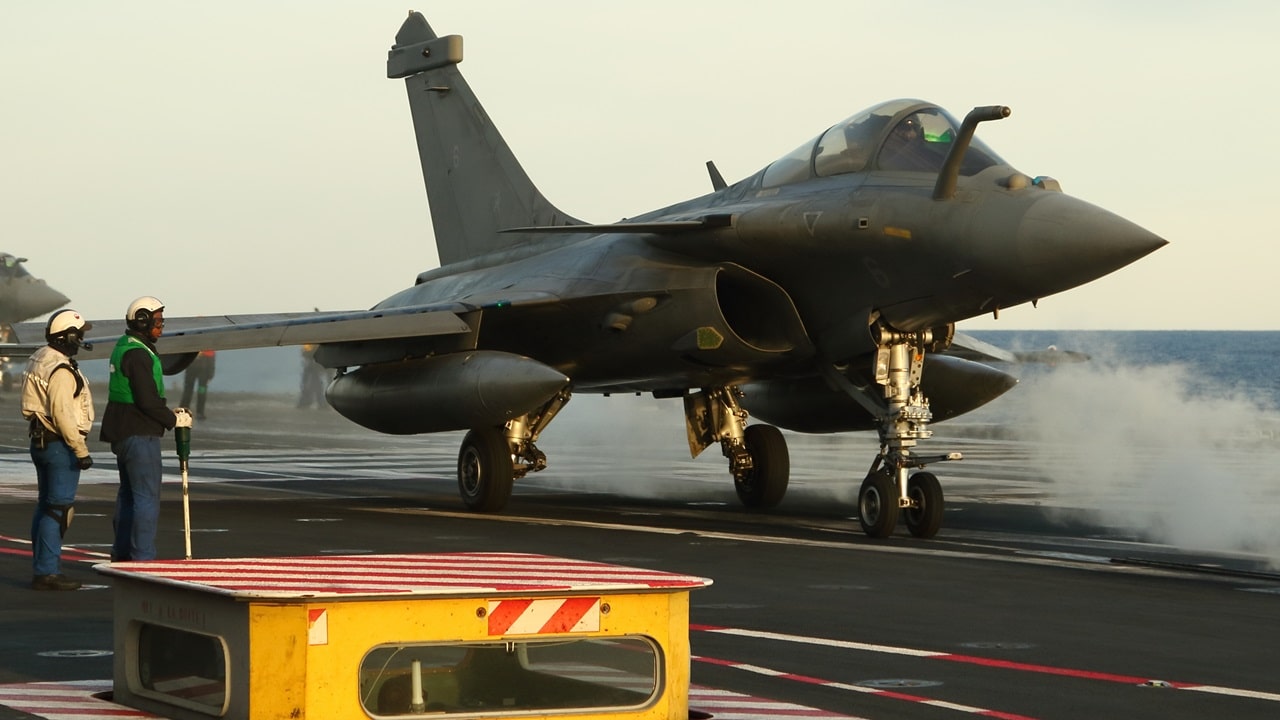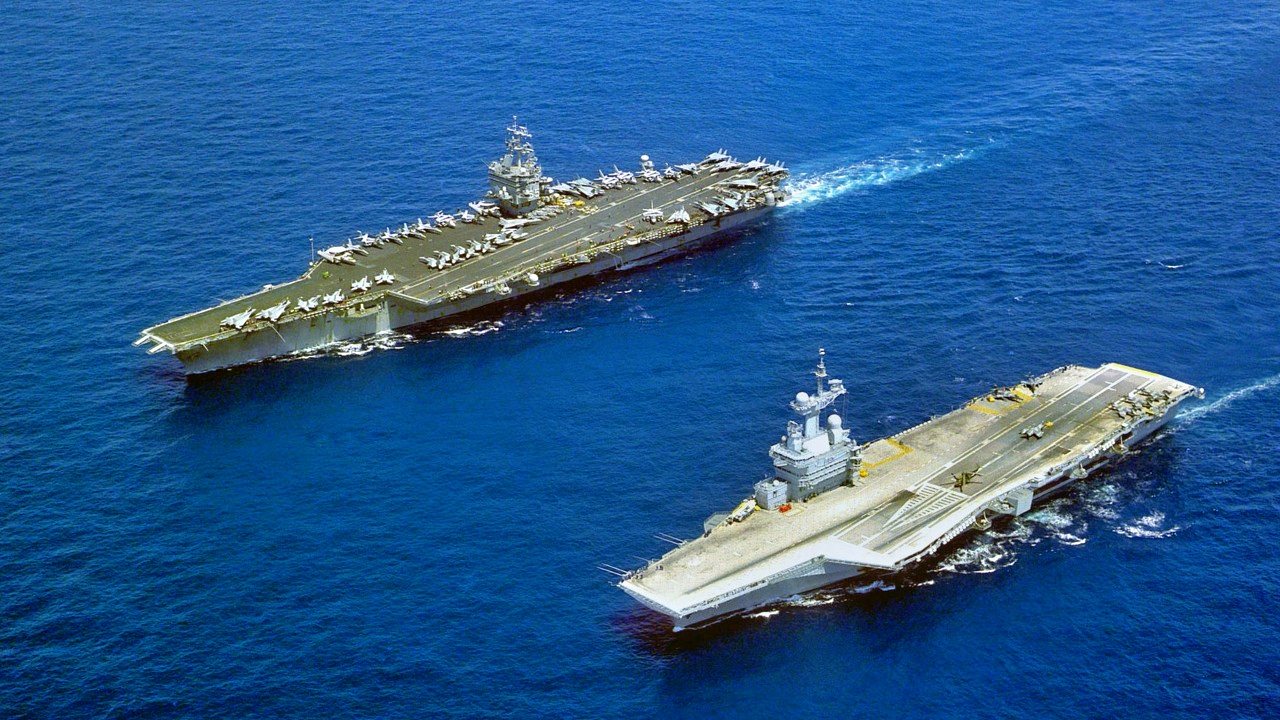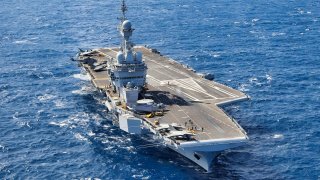Charles de Gaulle: France's Aircraft Carrier Is Now a 'NATO' Aircraft Carrier
The French aircraft carrier Charles de Gaulle, named after the former president known for his independent stance from NATO, will soon operate under NATO command, a notable shift given Charles de Gaulle's historical policies.
Summary: The French aircraft carrier Charles de Gaulle, named after the former president known for his independent stance from NATO, will soon operate under NATO command, a notable shift given Charles de Gaulle's historical policies. The Marine Nationale's flagship, alongside a strike group, will begin a deployment in the Mediterranean under the oversight of Naval Striking and Support Forces NATO. This mission marks the first time France has placed its nuclear-powered carrier and its accompanying forces, including a nuclear attack submarine, directly under NATO control, reflecting France's growing involvement with NATO since the onset of the conflict in Ukraine.
Charles de Gaulle Aircraft Carrier Set for First NATO Mission Amidst Strategic Realignment
It is hard not to see some "ironie" (irony) in the fact that the warship named for the late French leader Charles de Gaulle will soon be under NATO command – as de Gaulle pursued a policy of "national independence" and withdrew France from NATO's military integrated command.
It was announced this month that the Marine Nationale's flagship aircraft carrier Charles de Gaulle – the only nuclear-powered flattop in service apart from the U.S. Navy's supercarriers – and strike group will deploy under NATO command for the first time. The warships, including a French air-defense frigate (FDA), a multi-mission frigate (FREMM), and a nuclear attack submarine (SSN), will start a deployment in the Mediterranean on April 22, according to Rear Adm. Jacques Mallard, commander of the French carrier strike group.
The names and the pennant numbers of the French combatant vessels, apart from Charles de Gaulle, are being hidden as part of a deception experimentation launched in 2022 to potentially confuse an adversary.
"We're starting to get into the habit of not revealing the names, which is why the hull numbers and names have disappeared from our ships," explained Mallard. "It's quite effective, and it's sown doubt on several occasions when our vessels have come across other vessels that didn't know exactly what to call them. We try to maintain a level of ambiguity."
The Charles de Gaulle's airwing is expected to comprise 18 Rafale fighter jetstwo-thirds of the ship's capabilityalong with two E-2C Hawkeye airborne early warning and control (AEW&C) aircraft, and 2 Dauphin SAR helicopters. The airwing will be supported by one Atlantique 2 maritime patrol aircraft, operating in either a surface- or submarine-warfare role.
Vessels from the United States, Spain, Greece, Italy, and Portugal will complete the escort, but the total number and types haven't been detailed, Defense News reported.
NATO Mission
All of the mission vessels will report to Naval Striking and Support Forces NATO, a command based in Oeiras, Portugal. The units will participate in NATO alliance activities in Europe and the Mediterranean – dubbed Akila – to bolster deterrent and defense posture, contribute to regional security, and promote regional stability. The mission is scheduled to last six weeks and involves adjusting technical processes and command methods and providing mutual logistical support.
Paris has become increasingly involved with NATO following Russia's invasion of Ukraine.
"This is the first time that we put the Charles de Gaulle aircraft carrier and its escort, including a nuclear-powered attack submarine, under the operational control of NATO… during an operational vigilance activity, which is much more significant than an exercise," said French Vice Admiral Didier Maleterre, NATO's maritime second-in-command.

Maleterre added that France could get national command if needed at any point during the NATO deployment.
The Charles de Gaulle Aircraft Carrier in the Spotlight
The Charles de Gaulle has a crew of about 1,200, including around 80 staff, as well as the embarked air group. The Marine Nationale flagship set off from its home port of Toulon in January for sea trails, after being taken out of action for maintenance in May last year for work on the carrier's steam catapults, water-purification plant, and medical facilities, among other things.

The nuclear-powered carrier replaced the conventionally-powered Clemenceau in 2001, and Paris expects to continue operating the vessel until 2038 when the Charles de Gaulle is set to be replaced by a future nuclear-powered carrier known for now by its French acronym PANG.
Author Experience and Expertise: Peter Suciu
Peter Suciu is a Michigan-based writer. He has contributed to more than four dozen magazines, newspapers, and websites with over 3,200 published pieces over a twenty-year career in journalism. He regularly writes about military hardware, firearms history, cybersecurity, politics, and international affairs. Peter is also a Contributing Writer for Forbes and Clearance Jobs. You can follow him on Twitter: @PeterSuciu.
You can email the author: [email protected].


